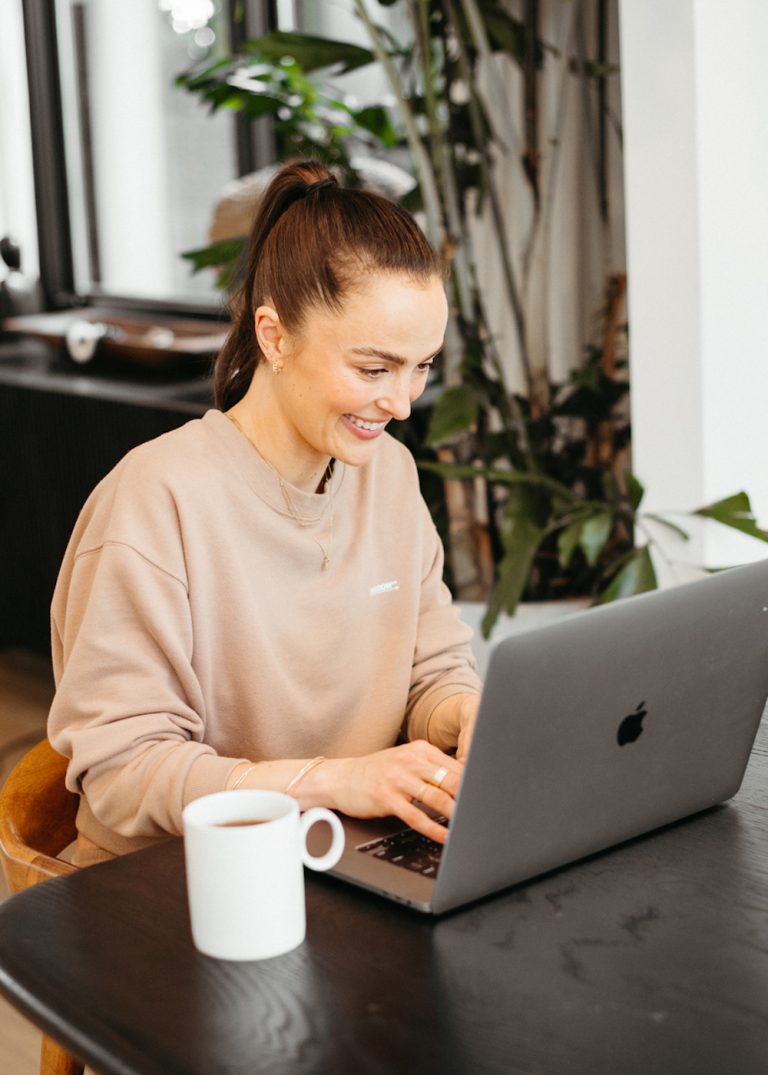This episode is part of “Innovations In: Health Equity,” an editorially independent special report that was produced with financial support from Takeda Pharmaceuticals.
[CLIP: Theme music]
Rachel Feltman: Most people in the world will have to think about caregiving at some point in their lives—either because they’ll need to support family members as they age or become ill or because they’ll need care themselves. But in the United States, many folks who act as caregivers feel like they’re in it alone.
On supporting science journalism
If you’re enjoying this article, consider supporting our award-winning journalism by subscribing. By purchasing a subscription you are helping to ensure the future of impactful stories about the discoveries and ideas shaping our world today.
For Scientific American’s Science Quickly, I’m Rachel Feltman. You’re listening to Episode One of a two-part miniseries about caregivers, the many challenges they face and the ways they can find better support. Our guides for this series are associate editor Lauren J. Young and senior editor Tanya Lewis, both of whom cover health and medicine for Scientific American. We’ll hear from Lauren next week. Today Tanya is here to help us understand the scope of the caregiving crisis.
So, Tanya, what made you interested in pursuing this story?
Tanya Lewis: So, as we know, so many of us become caregivers ourselves at some point in our lives, and this is something that I myself experienced when I became a caregiver for my mom when she was diagnosed with a very serious lung illness a couple years ago, and suddenly I found myself thrust into this role of taking care of her, even though I lived far away, and we were experiencing a pandemic at the time. But she was eventually, fortunately, able to receive a lung transplant, and after that, I was also very involved in her care. And just that whole experience of shifting my whole identity to accommodate taking care of her was something that I felt, you know, was probably a very common experience. And I was talking about this with my colleague, Lauren Young, who’s our associate health editor. Her mom had a similar experience of taking care of her mother, who was diagnosed with Alzheimer’s. And I think that we realized that we both had understood what it was like to become a caregiver, and I think we just really wanted to talk to other people and find out what the research shows about what kinds of stresses people experience when they’re caregivers and also what kinds of resources are available to help people because this is such a common and often challenging experience.
Feltman: Yeah, no, I have some personal experience in that my grandmother, who lived with us my whole life, had dementia near the end of her life, and I very much tried to be there to support my mom, who was really her primary caregiver. And it’s such a challenging process, even when you have all the privilege and the resources in the world, which, of course, many people don’t. So how did you, you know, go about finding out more about this issue?
Lewis: Yeah, so, we basically put out a call to people who listen to our podcast, and we asked if any of them wanted to share their stories about being caregivers. And we also visited an organization here in New York City, in Queens, that provides support for caregivers. So we were very fortunate to be able to talk to a number of different folks from, you know, totally different backgrounds and situations, but it was really interesting to hear the common threads that emerged in all of their experiences.
[CLIP: “Past Lives,” by Hanna Lindgren]
Lorraine Cortés-Vázquez: I never expected to be my mother’s caregiver. My mother never expected for me to be her caregiver. And all of the conversations that have to go on between the two so that you can still maintain the dignity that your parent needs while you are getting and providing the support also that they need and the support for yourself as you are adjusting to this shift in the roles.
Catherine Musinsky: Before I went on vacation, I was worried about my mother. And I, like, called her at 11 to make sure she was okay, and she said, “Oh, yes, I’m fine.” But then, sure enough, at 4:30 A.M., she called, and she was in dire pain and needed to go to the hospital.
Ingrid Di Lisio: It’s an emotional roller coaster because it’s not only that, you know, you’re taking care of somebody, but emotionally, it’s like you’re seeing your parents dying slowly every day, you know? They’re shutting down. And that’s a huge emotional, you know, thing to take on.
Feltman: So this is obviously, you know, a really intense and important issue. What does the data tell us? What does caregiving look like right now in the U.S.?
Lewis: So as many as a quarter of adults aged 45 to 64 identify as caregivers. One in four women and one in five men report being caregivers, and one in three provide more than 20 hours of care a week. At the same time, people are living longer and having fewer children, and the population is actually on track to peak by the end of the century. So this is naturally going to create a situation where it’s hard to find enough people and enough time to care for all of the older folks who will need that kind of care. And the phenomenon is happening around the world, you know, it’s not just the U.S.
Feltman: And is there any data on the scope of this caregiving imbalance?
Lewis: Yeah, there was a great study by Diego Alburez-Gutierrez and his colleagues. Diego is a social scientist at the Max Planck Institute for Demographic Research in Rostock, Germany. He and his colleagues looked at how family sizes are changing and how that could affect the amount of support that a caregiver may have.
[CLIP: “Those Rainy Days,” by Elm Lake]
Lewis: So the researchers looked at the average 65-year-old person, which is the typical retirement age in the U.S., and they asked how many relatives that person would have today versus in 1950 or in 2095. Here’s Diego.
Diego Alburez-Gutierrez: So in the U.S., for example, we project that this 65-year-old person—you can think of, like, it’s her birthday; she invites all of her relatives. Whereas now there are going to be around 30 people around, if that same person, or a person of that age, towards the end of the century, she organizes a party, there are only going to be about 20 relatives that can attend that party.
Lewis: And internationally, they found that a woman who turns 65 in the year 2095 will have just 25 living relatives, compared with 41 relatives in 1950 and 43 relatives in 2023.
Feltman: Wow, that does seem like a stark change. So what are the implications of that?
Lewis: Yeah, so it basically means that there’s just fewer young people around to take care of their parents or grandparents, and the sort of proportion of younger working people is declining relative to the older population who needs care. So this is something called a dependency ratio, and this really puts a squeeze on those younger caregivers.
Feltman: Yeah, well, and it’s not like these younger generations are in a particularly great financial climate to, you know, help their family members in ways other than being there physically to help give them care. So I can imagine that that pressure is probably really at a boiling point for some people, and it sounds like this is only going to become more of an issue as time goes on.
Lewis: Yeah, absolutely. And another stress that people are dealing with is that many people are taking care of their own children at the same time. That’s why, a lot of times, people are referred to as being part of the “sandwich generation,” because they’re basically sandwiched between caring for their older parents and their younger children at the same time. So that’s something that I think we’re going to continue to see more and more of over time, especially as people live longer and as people wait longer to have children of their own.
Feltman: Sure. And you know, of course, beyond how this impacts individual families, there are then a lot of systemic issues that, you know, can interact with this and exacerbate it, I’m sure. So who’s getting hit hardest by this demographic shift?
Lewis: So I just want to say, you know, this is something that every family probably faces to some extent, but there’s obviously particular challenges for some individuals, especially families of color, who are facing, like you said, these structural barriers and, a lot of times, just don’t have the resources to maybe send their parent or relative to, you know, a facility or get additional care. So another pattern that you see a lot is, you know, a lot of people in these families have multigenerational households, so you’ve got Grandma living under the same roof as the grandkids. And that’s a great thing in many ways, but it also means that the stresses for that middle generation are especially acute, and it’s harder to balance those needs with everyday tasks, you know, jobs, taking care of your own needs. So I think that’s one of the things that we’re seeing.
Feltman: Yeah.
Lewis: And we actually talked to Lorraine Cortés-Vázquez, who’s the commissioner for the New York City Department [for] the Aging, and we heard from her earlier this episode.
Cortés-Vázquez: I am an older adult myself caring for an older mother.
Lewis: We asked her about whether caregiving can come with additional challenges for families of color.
Cortés-Vázquez: I think that caregiving is a comfortable role for communities of color. The challenges for communities of color, usually, are the challenges that communities of color have, which is—is housing adequate so that if you have to make the decision, does your care recipient come live with you, or can they still live independently? It’s finances. All of the social determinants, you know, are there of inequity. They manifest themselves again in one’s older life, as well as in a caregiving role.
Lewis: You know, women or people who are assigned female at birth are really performing the bulk of caregiving, and this particularly often falls on daughters. So there’s actually sort of an unofficial term for this. It’s called “eldest daughter syndrome.”
Feltman: Yeah. I’ve definitely seen that on social media for sure.
Lewis: Yeah. And I mean, as an eldest daughter myself, I can definitely identify with this. You know, it’s basically the idea that the oldest daughter is sort of expected to take on a lot of those caregiving responsibilities.
Feltman: It feels very real, and I’ve seen people talking about that, I think, for as long as I can remember. Is there data that actually backs that up?
Lewis: Yeah, so it turns out there is actual data. There was a 2020 report by the National Alliance for Caregiving and AARP’s Public Policy Institute, which found that 61 percent of caregivers are women, and some estimates put that number as high as 80 percent.
Feltman: Wow.
Cortés-Vázquez: This really impacts women. You know, that’s not to say that there are not some very good sons who are caregivers. It primarily just falls on the women. You think of a woman in the prime of her professional career, what’s the impact on that career advancement?
Lewis: This is certainly an imbalance, but I don’t want to make it sound like there’s no men who are caregivers as well.
Feltman: Of course, yeah.
Lewis: Although there’s all this pressure on the oldest daughter and children in general, you know, it’s really important to have someone else to provide backup. So if you have siblings or friends or other family members who can help out, I think just even having one other person as a backup can be incredibly important for the mental health of the caregiver. And this is something that I personally found in my own life, you know, with my own siblings, when we were taking care of our mom—that we really valued having each other to kind of, like, take the load off now and then and take breaks. So we actually talked to an adult brother and sister who are helping care for their mother who lives in an assisted living facility. And the brother’s name is Tim Spellman, but his sister Margaret calls him “Saint Tim” because he actually takes care of several older people in their life, including their mom.
[CLIP: “Uphill Climbing,” by Anna Landström]
Tim Spellman: I do a lot of the visiting to take her to medical appointments and stuff, and my car knows the way really well. There’s been times when I’ve been in twice a week. I guess I’ll just say—so I have several old people in my life. My mother-in-law is 94. She’s about to turn 95 next month. She lives on the Cape. She saves up “honey-do” things for me to do for her when I get down there, and I absolutely adore that. So that’s been a real joy for me is to have all these people that I can do something for, and it really brings meaning to my life.
Lewis: Another person we talked to is Catherine Musinsky. We heard her voice earlier in the episode. She is a woman in Massachusetts and a daughter who—she’s taking care of her mom, who had a stroke a few years ago. She really explained how hard it is to be the sole person providing care, because, without having that backup, you know, every little task falls to you. And she just described how she feels constantly worried and anxious about her mom, and as much as she loves her mom and is happy to take care of her, she’s really had to put her own life on hold.
Musinsky: If I’m here, I can’t focus on anything for a long time without getting interrupted because her needs are continual or constant. She’ll drop something; she can’t pick it up. She needs help opening a jar. You know, the list goes on.
Lewis: For example, she has a boyfriend, but she feels like she can’t have him stay over because she’s constantly having to look after her mom. And she can’t go out dancing—she used to go to these, like, improv dance jams all the time. And she would go out to drawing nights and things like that, but she just can’t do any of that anymore, even though it was a really big part of her life before she moved in with her mom.
Musinsky: A lot of things that I used to live for are not present in my life right now. And it’s a big loss. It’s a big loss.
Feltman: Yeah. I’d imagine that these kinds of feelings are probably pretty common among caregivers. Do we have any data about that?
Lewis: Yeah, there’s actually been a number of studies on the psychological burdens of caregiving that show it really increases anxiety and stress in the person who is providing care, so their own physical and mental health suffers as a result. But like we said earlier, you know, just having support from others can be super helpful and also just reframing things in a more positive light. I mean, I don’t mean to be Pollyannaish, but having a different way of looking at things—that’s actually been shown in some of these studies to help.
[CLIP: “Glow,” by DP]
Lewis: And actually, it’s not just always a burden. I mean, we talk a lot about the hardships of caregiving, but there are bright moments and joys that people experience, and often they report feeling a deeper connection with the family member that they’re providing care for.
Musinsky: This morning, we were laughing because we both wear the same type of pajamas. I see that she trusts me. And that kind of brings a little joy—or not joy but just quiet satisfaction.
Feltman: Yeah, I think that that point about, you know, reframing things is really powerful. I have this memory of my late grandmother, really just before she had to stop living at home with us. And you know, I did not live full-time with my family at that point, but I had come home to visit, and my mom had asked me to make sure my grandma was okay changing into her pajamas. And my grandma, who at that time still had moments of knowing who I was, took on a very, like, childlike countenance in being like, “Yes, it’s totally normal that someone is here to change me into my pajamas.” And it was really jarring for a moment because I was really not being perceived as this person’s granddaughter. It was a full role reversal. But then, you know, now, when I think about it, I’m like, she felt really safe with me and was very carefree and was like, you know, “I don’t really know why this person is here changing my clothes, but I know it’s totally fine.” And, yeah, I think, you know, it’s so true that even when it’s challenging, it can also be such a joy and a privilege.
Lewis: Absolutely. And, you know, that’s such a beautiful example of just how, you know, we all experience kind of these role reversals in life, and as our parents get older, we often have this opportunity to kind of pay them back for everything that they did for us. And that is a deep sense of, you know, satisfaction, I think, for a lot of people, myself included.
Feltman: So for any current or future caregivers who are listening right now and who are, you know, maybe deeper in the challenges than the joy at this point, what kinds of resources are there that people can turn to for support?
Lewis: So there’s actually a lot of places where people can find help. And our second episode is going to go into this in more detail, and my colleague Lauren Young will talk about some of these organizations. We visited, for example, a community center in Queens that provides help and also activities for caregivers. And we got to meet some of the folks that were coming and taking care of their own family members.
[CLIP: “Rainshower,” by Johannes Bornlöf]
Lewis: I think that this was one place where people could find not only professional caregiving support but also just community with each other. I think one of the hardest things that caregivers go through is just that they feel like they’re alone. Being able to meet with other caregivers—they often feel like they can relate to each other because they’re going through the same things together.
Feltman: We’ll continue this two-parter next Friday with some on-the-ground reporting from Lauren J. Young. In the meantime, you can check back in with us on Monday for a quick roundup of the latest and greatest science news stories.
[CLIP: Theme music]
Science Quickly is produced by me, Rachel Feltman, along with Fonda Mwangi, Kelso Harper, Madison Goldberg and Jeff DelViscio. Today’s episode was reported and co-hosted by Tanya Lewis. Lauren J. Young also contributed reporting for this miniseries. Special thanks to Tulika Bose for supporting this series throughout its preproduction. Shayna Posses and Aaron Shattuck fact-check our show. Our theme music was composed by Dominic Smith. Subscribe to Scientific American for more up-to-date and in-depth science news.
For Scientific American, this is Rachel Feltman. Have a great weekend!


























































